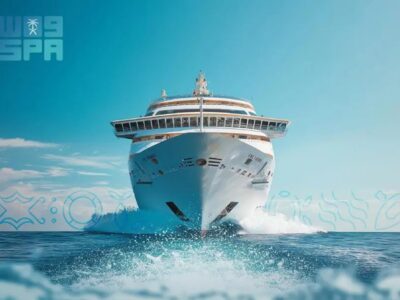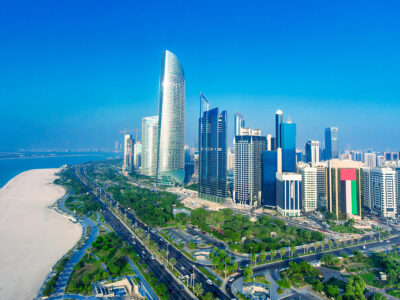“Some of the greatest innovation I have ever seen has come out of Africa,” says Ivor Ichikowitz. “But for some bizarre reason, people refuse to believe that.”
Ichikowitz, the wealthy industrialist, and chairman and founder of the Johannesburg-based Paramount Group, is hoping to buck those misconceptions. Already Africa’s largest home-grown defence and aerospace company, Paramount Group is in the midst of a growth spurt that Ichikowitz says will see it pass a billion dollars in revenues, either this year or in 2015.
“We have a remarkable technology base in South Africa,” he says. “There’s a tremendous research and development and prototyping capability. But it’s never been our plan to create huge industrial capability in South Africa — the geography is all wrong. And, frankly, there are other places in the world where we can better set up manufacturing… to keep it as close to the market as possible.”
In short, then, Paramount’s plan is to market its products — which will soon include Africa’s first self-funded military jet, alongside armoured cars and naval vessels — to emerging-market clients it thinks the more conventional defence suppliers haven’t yet reached, or are unwilling to service.
“Our biggest focus is to provide affordable solutions — not cheap ones — right across the board,” says Ichikowitz. “Our logic is that it doesn’t matter how much money you’ve got, you’ve still got to be able to provide your forces with the same basic levels of capability.”
That focus on emerging markets is in line with the current trends in the global defence industry, which is seeing established Western economies retrench spending on their military budgets, with the slack being taken up by faster growing markets in South-East Asia, the CIS and the Middle East.
When it comes to the Gulf, Saudi Arabia spent $67bn on military equipment last year, according to the Stockholm International Peace Research Institute (SIPRI), overtaking both the UK and France to make it the fourth-largest defence market worldwide. The kingdom spends a colossal 9.3 percent share of its gross domestic product (GDP) on defence and defence-related products, by far the highest in the top 15 biggest military buyers.
Next, in terms of spending as a percentage of GDP, is the UAE, which splashed out an estimated $19bn last year — a figure that has shot up by 85 percent in the last decade alone.
Article continued on next page…
No wonder Ichikowitz is hoping that the Middle East will soon make up between 20-25 percent of Paramount’s sales, followed by South East Asia (15-20 percent) and Latin America (15-20 percent). But Paramount’s bid to make inroads into the Gulf market hasn’t been entirely smooth. Back in 2011, when Arabian Business last spoke with Ichikowitz, the Paramount Group had just signed a joint venture deal with Abu Dhabi’s International Golden Group (IGG) to set up a production facility to build armoured vehicles in the UAE. However, the chairman says that the plan never came to fruition.
“IGG at that stage was looking at a business plan that didn’t necessarily involve full-scale production here in the UAE,” he says. “As we’re developing, that’s what we’re looking for — full industrial partnerships as opposed to sales and marketing partnerships. I think IGG remains a very good organisation, but doing different things to what we do.”
“The UAE itself, as a market, is never going to be the biggest market in the Gulf,” he continues. “It’s an important market and a strategic market, and I think the UAE makes for a very good manufacturing base. But any manufacturing base in the UAE would need to feed the bigger demand in the rest of the Gulf. So that’s what we’re looking for. Whereas in the past, we were looking to be opportunistic, to get a deal, to make a product — today we’re looking at things differently.”
Instead, Ichikowitz says the firm is in “discussions with a number of players” about setting up a new partnership, although he declines to give a timeline on those discussions. But the model is clear. Elswhere in the world, Paramount signed a joint venture deal in December last year with Kazakhstan Engineering Distribution to build armoured vehicles and civilian buses in the Central Asia nation.
Building on that move, in May, the company set up Arabian Defence Industries (ADI), a joint venture with Jordan’s King Abdullah II Design and Development Bureau Investment Group (KIG). Signed in the presence of King Abdullah, that deal, Paramount hopes, will be a game-changer for the defence industry in the Middle East. As well as producing the Mbombe armoured car, the facility will also have the ability to upgrade military helicopters and training jets.
“The venture seeks to meet the regional needs for such vehicles and aircraft, especially the Mbombe…Jordan will be exporting these vehicles and others, a project that will create scores of jobs for talented Jordanians,” Ichikowitz said at the time.
So how can Paramount compete against the more established and deep-pocketed defence contractors, such as Lockheed Martin, Raytheon, BAE Systems and so on?
“One of the reasons we’re being very competitive is today we have technologies that are virtually at the same level as the major international contractors,” Ichikowitz says.
Article continued on next page…
“But because our time to market is quicker, because we are a lot more agile and frankly because we have a different approach to the way we do business, we’re able to do this in a way that allows customers to afford this capability.”
Ichikowitz’s claim to have attained near parity on technological terms with the bigger players in the industry is an intriguing one, particularly given the R&D budgets and experience of his competitors. But the company certainly seems to have found a niche. Nowhere is Paramount’s philosophy of offering reasonably priced kit that can do more than one task more obvious than AHRLAC (Advanced High Performance Reconnaissance Light Aircraft ), a odd-looking two-seater turboprop that is just over 10 metres long and 4 metres high.
“The aircraft is completely unusual — there’s nothing like it in the world,” Ichikowitz says. “It’s able to do paramilitary work, policing work, pipeline control, coastguard work — and it has a configuration as a light ground support aircraft and as a light attack aircraft. Last time I checked, there were 16 possible configurations for one airframe.”
The chairman says that the aircraft development programme has been entirely self-funded, adding that AHRLAC will begin its first test flights “in the next couple of months”, four years after the project was first conceptualised. He doesn’t say how many have been sold, but he does say that there has been a lot of “positive uptake” from potential clients, as well as “huge excitement in the Middle East to what we have to offer”.
What else is in the pipeline after AHRLAC? Ichikowitz says that helicopters will be the company’s next area of focus in the aerospace field.
“We are absolutely working on a number of concepts to develop a light multi-role helicopter platform and that’s going to be the next big thing,” he adds. “It’s a priority, and it’s something that we have team actively working on.”
Elsewhere in the Paramount portfolio, Ichikowitz highlights hybrid ships that are used to carry out security work for oil and gas companies, but which also double up for use as rig support and crew transport vessels as well. And he also says that there is plenty of potential in a new range of 42 metre long trimarans that can perform the same sorts of tasks as a conventional frigate.
“The common philosophy of most navies in the world is that you need a couple of frigates, a few submarines and some helicopter platforms,” he says. “So we’ve come up with a menu of offerings for navies that need operational capability quickly, but could never afford that conventional capability.
Article continued on next page…
“So instead of one frigate, you could have four trimarans, which can carry helicopters, act as fast patrol vessels and have two weeks of autonomy. Instead of having one vessel where you have to make huge investments in electronics, optics and radar, you have four vessels where you can cover four times the area with a much lower investment.”
Further down the line, it seems that further acquisitions may well be in Paramount’s future. Last year, it bought three companies, including ATE, perhaps South Africa’s most established defence contractor. “Opportunities rose to bolster our capability, and we took them,” Ichikowitz says. “It certainly has changed the nature of our business, and our standing in the international business. We’re absolutely now a lot better at this and we have our eyes wide open for other acquisitions.”
When pushed as to what sort of gaps in the Paramount portfolio any new purchases might seek to fill, the chairman says he “won’t be buying technology assets for the sake of buying technology assets”.
“My gut tells me the next area we’ll be looking at very seriously is the space environment,” he adds. “So satellites, space, and cybersecurity, because that’s what our customers are talking about.”
But as Paramount grows to become a $1bn company, it seems unlikely that an initial public offering (IPO) is in the pipeline.
“Part of our USP is that our decision-making process is quick, we’re entrepreneurial, we are very much customer-focused and I’m not sure that it’s easy to do all that as a public company,” the chairman says. “It’s not in our current plan but never say never.”
But Ichikowitz’s main driver is both to take Paramount global, and to persuade the planet that African industry and know-how is right up there with the best of them.
“I want Paramount to succeed not just from a commercial standpoint, but because I think it has the opportunity to be a guiding light for other African enterprises,” he says.
“If we can achieve what we have and are going to achieve, in what is the difficult, hi-tech and complex industry around, why can’t we achieve it in every other sector of economic development?”








